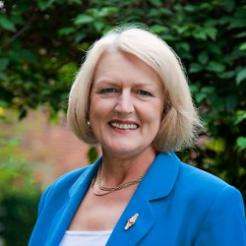Diabetes UK has set a target of halving the rate of increase of Type 2 diabetes and halving the complication rate for people with diabetes, within five years.
It also intends to increase the life expectancy for people with both Type 2 and Type 1 diabetes, who currently die, on average, ten to 20 years younger than the general population.
The charity’s recently-appointed chief executive, Baroness Barbara Young, outlined the challenging targets in her opening plenary at the Trustee Exchange conference in London yesterday.
She admitted that these outcomes were unlikely to be achieved by the charity singlehandedly, but it was important to set such goals so that an organisation has something solid to aim for.
“Unless we’re making real progress of that sort then what are we here for?” she said. “Are we achieving anything?”
Be clear on accountability
Baroness Young said that when she arrived at Diabetes UK, it was totally unclear who the charity was accountable to. And so when it began drawing up its new strategy, it was assumed by people within the organisation that because there are expected to be five million people with diabetes by 2025, Diabetes UK’s role would simply be to provide good services for them.
“But to me that would have been a real mark of failure,” said Baroness Young. “If we’ve got five million people with diabetes in 2025, then Diabetes UK has failed.
“So we had a strong and spirited debate about whether we were there as the organisation for people with diabetes, or whether we were there to make life better for the people at high risk of diabetes and to improve outcomes for people with diabetes by not developing complications. Luckily I think we came to the right conclusion.
“Whether we can do it or not is another matter, we’re only in the first year of delivery. But that really tense debate between our trustees and our executive was pure gold. Because we now all understand absolutely where everyone’s coming from, what the pros and cons are, and what the logic was that brought us to where we are. And I think everybody’s pretty powerfully behind the strategy.”
She said it was important that all charities have that conversation, so that everyone, executive and board members, know exactly who the organisation is accountable to and what its priorities are. Because people will often have surprisingly different views, she warned.
At RSPB, where she was chief executive from 1991 to 1998, the debate was about whether the charity was there for birds, the environment, or people. "Was it about keeping the ecosystem in good shape so the human race could survive and enjoy wildlife, or were we there for the intrinsic value of birds?" she posed. "We decided in the end that we were accountable to the birds and the environment."
The Trustee Exchange conference is the annual conference associated with Governance magazine.









